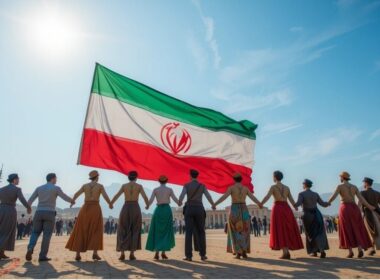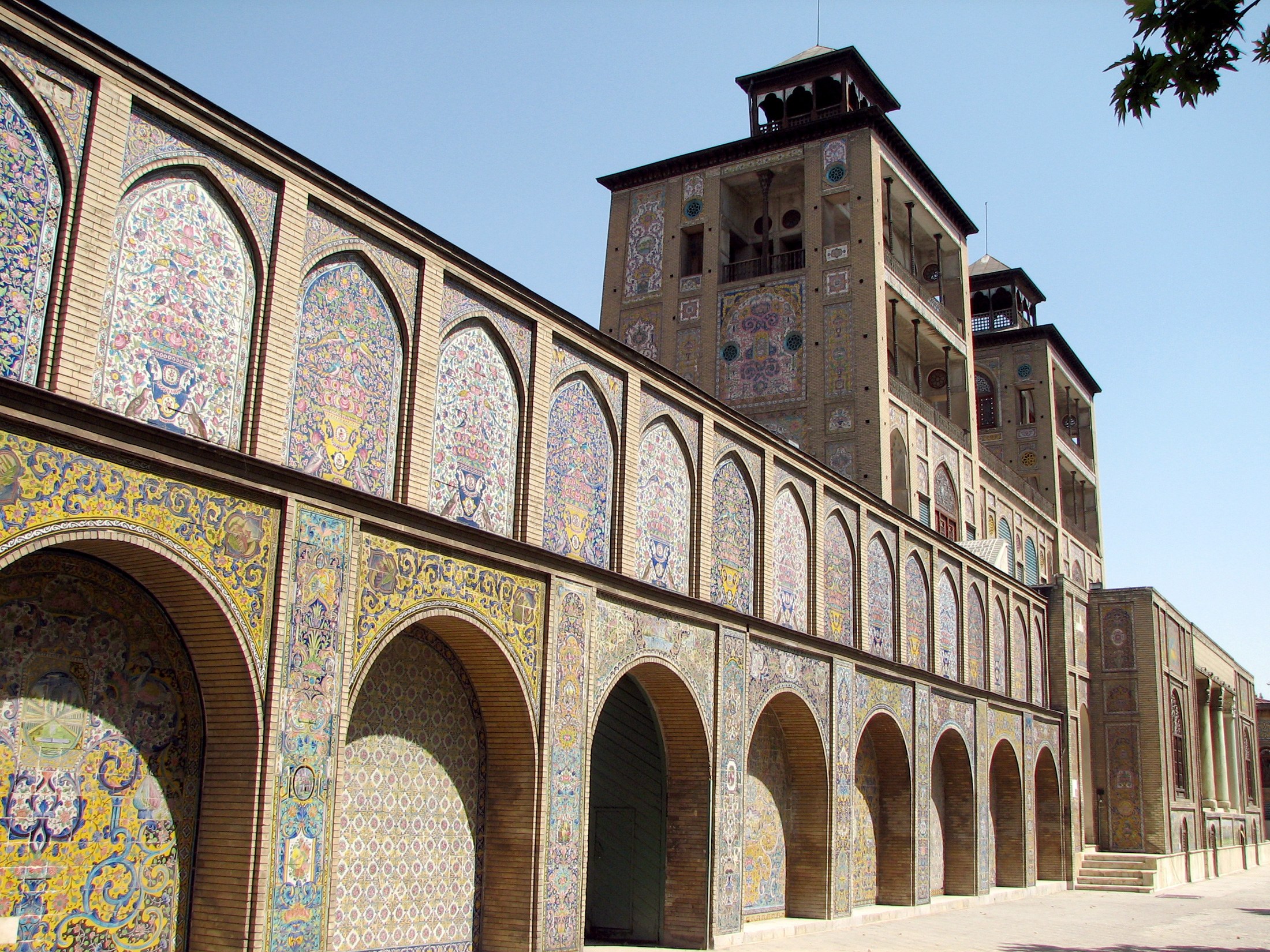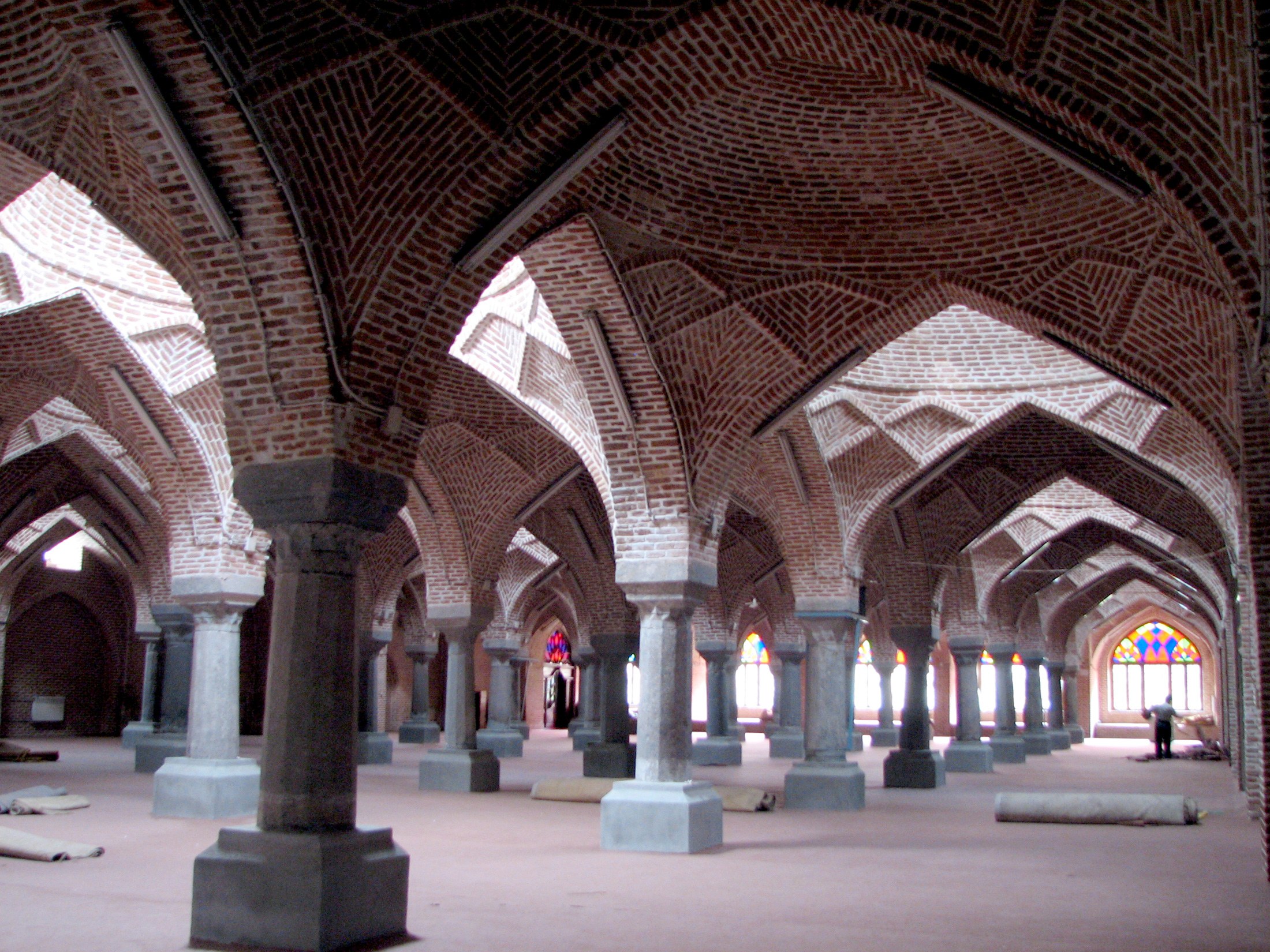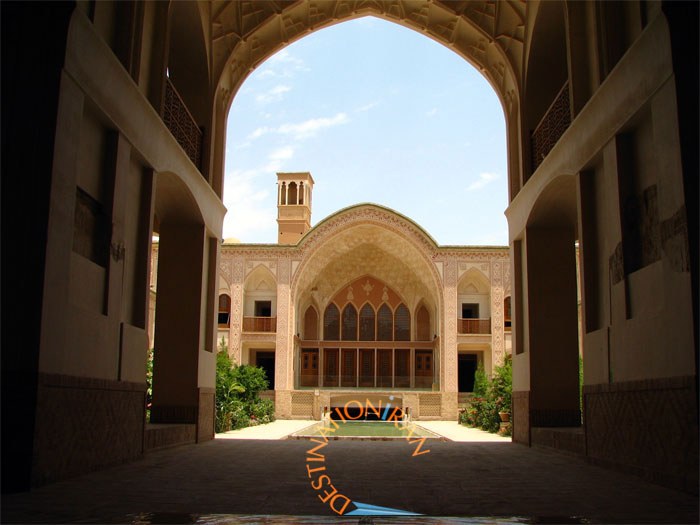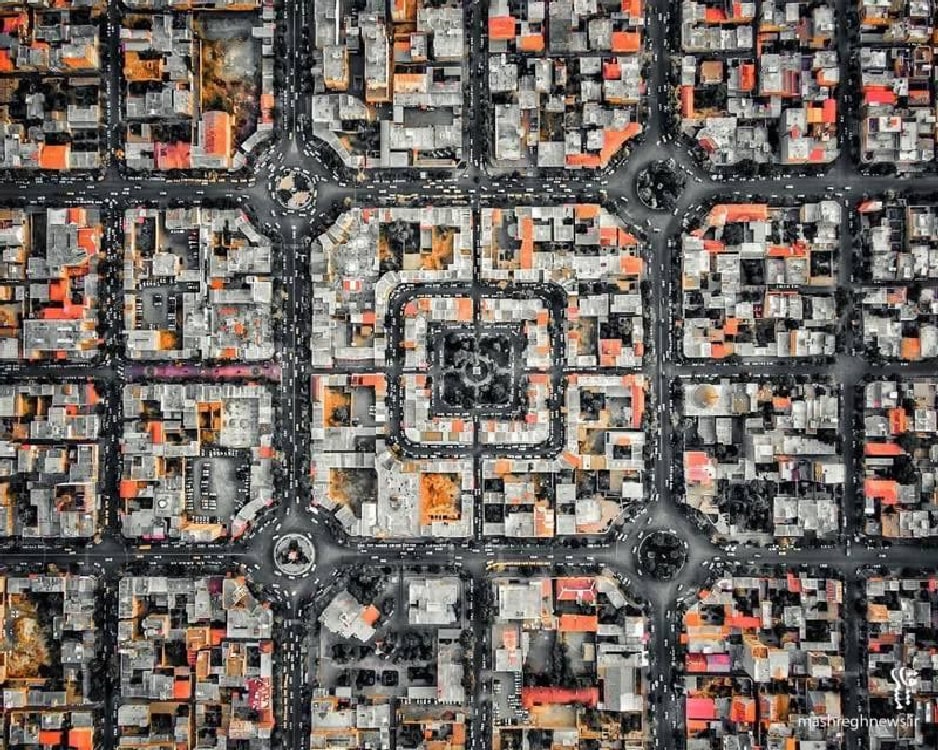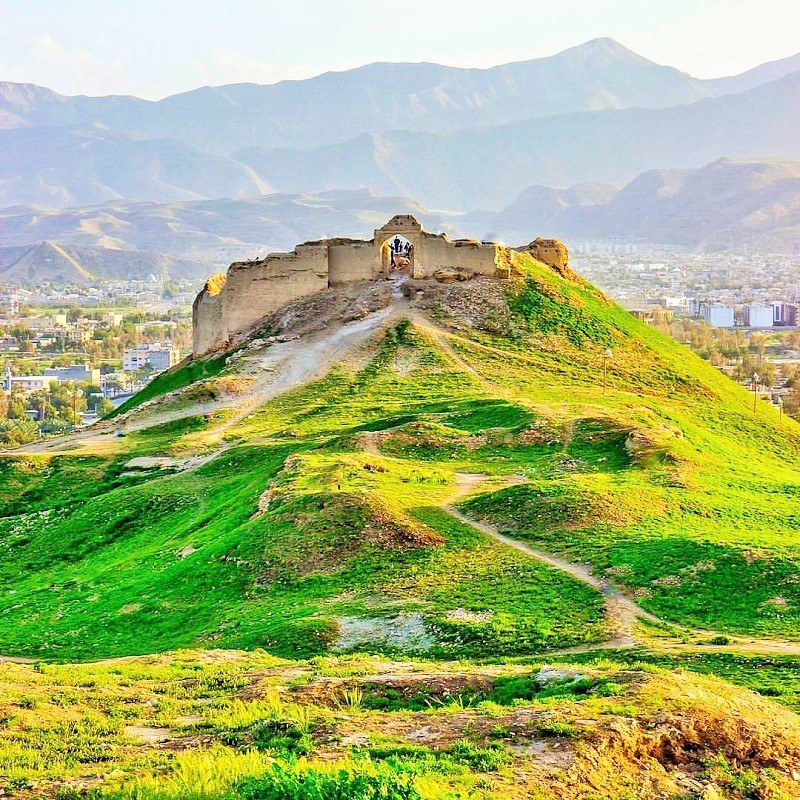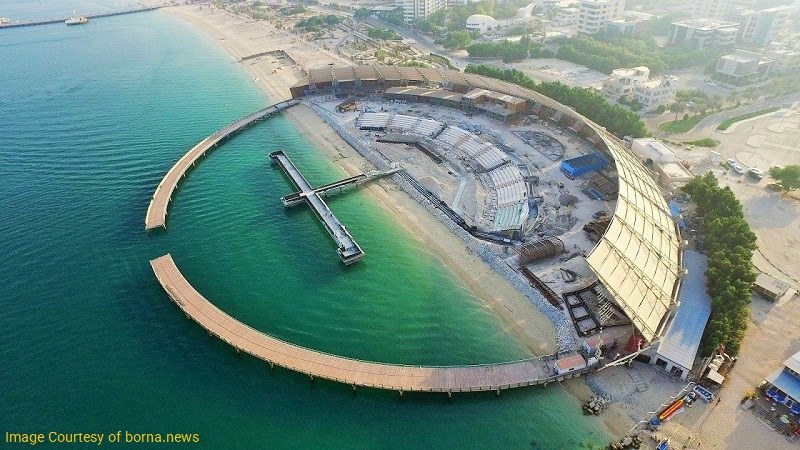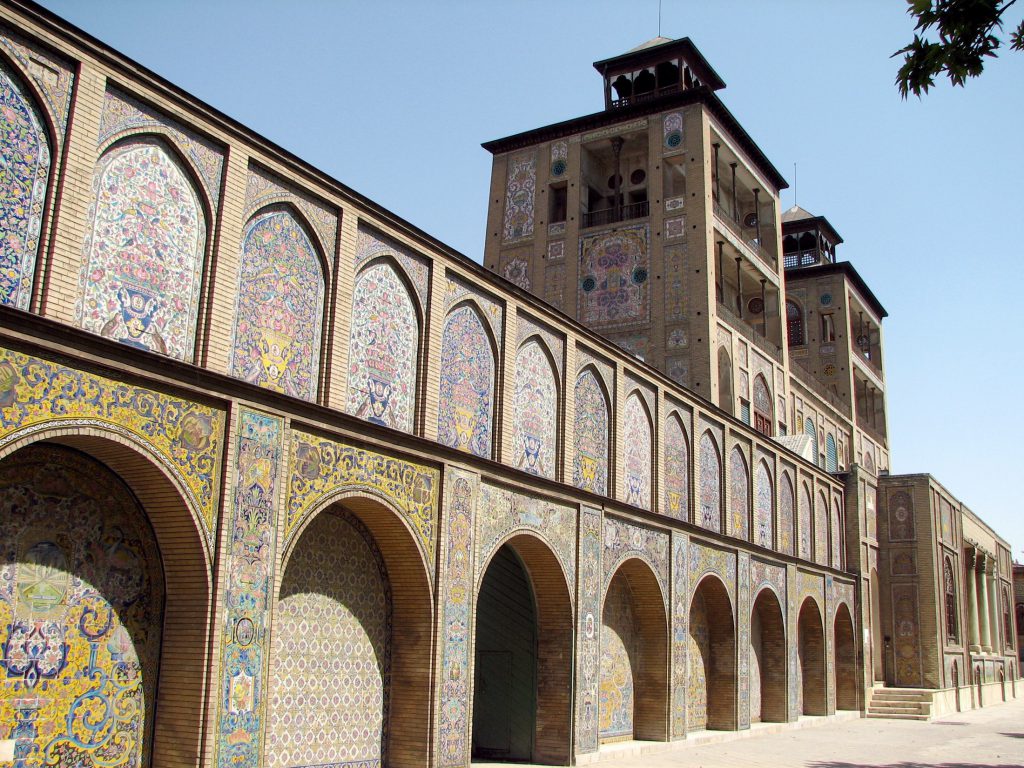
Many international travelers decide to start and end their tours of Iran from Tehran. It’s the capital of Iran and has got the largest international airport to and from which flights are scheduled. These flights are from and to Imam Khoemini International Airport (IKA), 30 km south of the city.
Although this city hasn’t been known as an ancient city, a visit to Tehran tourist attractions during your Iran tour exploration is highly recommended because:
- You find out about modern life in Iran there,
- You can go to several interesting museums,
- You can discover a lot about modern arts and architecture,
- and so on.
Therefore, when you plan a trip to Iran, consider the potentials of this cosmopolitan city.
Geography of Tehran
The city is located at the foothill of Alborz Mountains at its north. Tehran height is in a minimum of 900 meters and in a maximum of 1800 meters above sea level.
It is situated on a slope that goes up to the very north of the city. This slope has made it a very favorable place to live where the temperature is always cooler than the south of the city by a few degrees centigrade.
Compared to the other parts of the country, this city has got relatively moderate temperatures creating an enjoyable place to live. The average annual rainfall is 220 mm and the average annual temperature is 14°C in Tehran.
On the other hand, Tehran has got plenty of air and noise pollution. Like many other big cities in the world, it’s not for everyone to live in Tehran. It has its positive and negative points.
Here are the different ways of traveling to Tehran from different cities:
- By airplane
Tehran has two main airports: Mehrabad Airport and Imam Khomeini International Airport.
Mehrabad Airport is located in the urban district. The domestic flights to various cities of Iran are served by Mehrabad Airport. with several inbound and outbound terminals, Mehrabad Airport is located in the city center of Tehran.
However, all foreign flights are served by Imam Khomeini International Airport. The airport is located 30 km from Tehran to Qom road and has several passenger terminals.
The following table shows the airline and destinations who have flights to Imam Khomeini Airport (IKA):
| Airlines | Destinations |
| Aegean Airlines | Athens |
| Aeroflot | Moscow–Sheremetyevo |
| Air Arabia | Sharjah |
| AirAsia X | Kuala Lumpur |
| Air Astana | Almaty |
| Alitalia | Rome |
| Al-Naser Airlines | Charter: Baghdad |
| Armenia Airways | Yerevan |
| ATA Airlines | Baku, Denizli, Tbilisi, Istanbul (Ataturk Airport), Najaf
Charter: Batumi |
| Atlas Global | Istanbul
Seasonal charter: Adana, Antalya, Izmir |
| Austrian Airlines | Vienna |
| Azerbaijan Airlines | Baku |
| Borajet | Charter: Adana, Antalya |
| Bulgaria Air | Seasonal charter: Varna |
| Buta Airways | Baku |
| Caspian Airlines | Dubai, Isparta, Najaf |
| Cham Wings Airlines | Damascus |
| China Southern Airlines | Ürümqi |
| Corendon Airlines | Charter: Antalya, Kayseri |
| Emirates | Dubai |
| Flydubai | Dubai |
| Freebird Airlines | Charter: Adana, Antalya, Istanbul (Ataturk), Izmir |
| Georgian Airways | Tbilisi
Seasonal charter: Batumi |
| Germania Fluggesellschaft mbH | Berlin Schönefeld |
| Ikar Airlines | Charter: Moscow–Sheremetyevo |
| Iran Air | Amsterdam Airport Schiphol, Ankara Esenboğa Airport, Baghdad, Beirut, Köln/Bonn, Copenhagen, Damascus, Dubai, Frankfurt, Gothenburg-Landter, Hamburg, Istanbul-Ataturk, Karachi, London-Heathrow, Milan-Malpensa, Najaf, Mumbai, Moscow-Shermetyevo, Paris-Orly, Rome, Stockholm-Arlanda, Vienna
Seasonal charter: Jeddah, Medina |
| Iran Aseman Airlines | Dubai, Istanbul-Ataturk, Najaf, Yerevan
Seasonal charter: Isparta, Izmir, Moscow–Vnukovo, St. Petersburg, Tbilisi |
| Iraqi Airways | Baghdad, Najaf, Nasiriyah |
| Kam Air | Mazar-i-Sharif |
| Kish Airlines | Baku, Denizli, Sparta, Istanbul-Ataturk, Istanbul- Sabiha Gökçen, Izmir, Kiev- Boryspil, Najaf, Tbilisi, Yerevan |
| KLM | Amsterdam, the flights of this airline have been canceled since September 2018. |
| Kuwait Airways | Kuwait City |
| Lufthansa | Frankfurt |
| Mahan Air | Almaty, Ankara, Baku, Bangkok–Suvarnabhumi, Barcelona-El Prat, Beijing, Beirut, Damascus, Delhi, Dubai, Dusseldorf, Erbil, Guangzhou, Istanbul-Ataturk, Najaf, Kabul, Kiev- Boryspil, Kuala Lumpur, Milan-Malpensa, Moscow-Venukova, Munich, Paris-Charles de Gaulle, Shanghai, Yerevan
Seasonal charter: Athens, Columbus, Goa, Sparta, Izmir, Mauritius, St. Petersburg, Sochi, Varna Charter: Casablanca, Denpasar, Denizli, Konya, Larnaca, Morocco |
| Meraj Airlines | Istanbul-Ataturk, Izmir, Najaf
Seasonal charter: Antalya, Delhi, Isparta, Konya |
| Nordwind Airlines | Seasonal charter: Moscow–Sheremetyevo, Saint Petersburg |
| Nouvelair | charter: Tunis |
| Oman Air | Muscat |
| Onur Air | Seasonal charter: Adana, Antalya |
| Pegasus Airlines
| Istanbul–Sabiha Gökçen
Seasonal charter: Adana |
| Qatar Airways | Doha |
| Qeshm Air | Baghdad, Brussels, Dubai, Istanbul-Ataturk, Izmir, Najaf, Sulaimaniyah
Seasonal charter: Denizli, Sparta, Moscow-Shremetyo Charter: Batumi Batumi, Bucharest, Jeddah, Larnaca, Medina, St. Petersburg, Sochi, Tbilisi, Varna, Yerevan, Zagreb |
| S7 Airlines | Moscow- Domodedovo International Airport |
| SunExpress | Charter: Adana, Antalya, Izmir |
| Taban Air | Baghdad, Batumi, Istanbul-Ataturk, Izmir, Najaf, Tbilisi
Charter: St. Petersburg, Moscow-Sheremetyevo |
| Tajik Air | Dushanbe International Airport |
| Tailwind Airlines | Charter: Adana, Antalya |
| Thai Airways International | Bangkok-Suvarnabhumi |
| Turkish Airlines | Istanbul-Ataturk, Istanbul–Sabiha Gökçen
Seasonal charter: Ankara, Izmir |
| Turkish Airlines
Run by Anadolujet | Charter: Ankara, Izmir |
| Ukraine International Airlines | Kiev–Boryspil |
| UM Air
Run by Bravo Airways | Kiev–Zhuliany |
| Wings of Lebanon | Charter: Beirut |
| Zagros Airlines | Baghdad, Izmir, Najaf, Istanbul-Ataturk, Tbilisi |
- By car
Tehran has four passenger terminals in four parts of the city. These terminals have daily buses leaving for various cities in Iran.
1- West Terminal
West Terminal is one of the largest terminals of Tehran. Most bus service lines in Iran have active representatives in this terminal and provide services to most cities in the country, especially western cities.
2. Khazaneh Terminal or South Terminal
This is the oldest terminal in Tehran. You can use the Bus Rapid Transit system (BRT) or subway known as Metro (South Terminal Subway Station) to access this terminal. One of the doors of this subway station opens directly to the terminal.
3- East Terminal
This is the second-largest passenger terminal in Tehran. This terminal is located in Tehran Pars, Damavand Street. East Terminal has 25 trips daily to various parts of the country.
4. Bayaqi Terminal (Argentina Terminal)
This is one of the other terminals in Tehran having easy access to public transport within the city.
- By train
Tehran has two systems of rail transport. The first is the railway for various trains leaving for different cities in Iran. The second is the urban railway of Tehran and its suburbs. This system is responsible for urban traffic.
Tehran Railway
The capital of Mashhad, Tabriz, Ahvaz, Bandar Abbas, Zahedan, Yazd, and Shiraz Provinces have trained to Tehran. There are also more than 70 stations providing access to the train.
Tehran Subway
Tehran Subway has 7 main lines. Its five lines (2, 3, 4, 6 and 7) are completely in-town. However, one of them (line 1) is completely suburban (between Karaj and Tehran) and another one (line 1- the sub-branch of line 1) has two parts, the first part is urban and the second part is suburban (between Tehran and Imam Khomeini International Airport).
The Tehran Metro has a length of 220.5 km with 122 stations. The number of active wagons in the Tehran Metro is 1230 wagons that carry an average of more than 5 million passengers daily.
When you visit Tehran and other cities of Iran, by comparison, you find out it is very much more populated than other urban areas in Iran. The mass migration of the 20th and 21st centuries to this gigantic city has occurred in the search of jobs and better living conditions. Many argue that this city should undergo some national decentralization process to be a better place to live.
Economy & Population of Iran’s Capital
The economy of Tehran is vast and diverse. Since it is the capital of Iran, Tehran is home to a variety of businesses. Industrial towns, wholesale and retail markets, diverse commodities and services, small and large corporations have formed the economy and industry of Tehran.
The population of Tehran is 10 million inhabitants at nights, but increases by 14 million in working days. This additional figure refers to the people who live outside Tehran, but commute to this city every day for work.
History of Tehran
The present location of Tehran has been historically known as Ray, which is now a county in the south of the present-day city. Ray’s history dates back to 3000 BC. Some historical sources mention it as the capital of the Medes for some time. Today, you find several Tehran tourist attractions here and in this part of the city.
Ray was destroyed by Arabs in the 7th and Mongols in the 14th century. Yet, the inhabitants fled to this city of Tehran, the nearby village at the time of Mongols’ invasion. Tehran began to prosper since then and came to the attention of the Iranian ruler, Karimkhan Zand when he wanted to declare his capital city. Although he ordered a palace to be built for him in Tehran, he later decided to choose Shiraz.
With the rise of Qajars, today’s capital city gained its importance when it was declared the capital of Iran in 1795. Palaces were built one after another and continued to be built under the next dynasty, Pahlavi. Even after the monarchy fell apart in the 1979 revolution of Iran, Tehran kept its significance as the capital of Iran.
Historic Attractions inside the City
Here’s a list of interesting places to visit:
Golestan Palace Compound
The mansion is located in Baharestan District, city center. Its architecture combines traditional Iranian and Western architectures. This combination has given the house an almost new style and structure of the 19th century.
Ferdows Garden
This mansion garden belongs to the Qajar period. Architects have used a variety of stucco techniques in the construction of this garden. It is now used as a cinema museum.
Shahid Modarres House
This house is located in Oudlajan Neighborhood. Shahid Modarres was one of the most influential contemporary political figures in the Iranian Islamic revolution. The French Foreign Minister of Education was the former owner of the house of Shahid Modares. Later, this house was given to Modarres to live in.
This house is a good example of Iranian architecture in Tehran because it has several sections representing Iranian house architecture, such as Andarouni and Birouni.
Masoudiyeh Mansion Complex
Iranian architects built this monument in the Qajar era and under the order of Naser al-Din Shah. Divan Khaneh Mansion, Sofreh Khaneh Mansion, Sayyed Javadi House, Moshiri House, and Moshir ol-Dowleh Mansion are different parts of this mansion complex. This building was one of the main headquarters of the Iranian constitutionalists where they coordinated many activities.
Mashq Square
The construction of the square dates back to the Qajar period. Mashq Square is located in the oldest and most historic neighborhood of Tehran, former Toopkhaneh (meaning artillery). Over time, Iranians constructed many buildings on the square that tourists can visit now.
Shahrbani Palace, the Palace of the Ministry of Foreign Affairs and Post Office are among these buildings. Mashq Square was originally a military area built for the martial exercise of marching by the army during the reign of Fat’h Ali Shah Qajar.
Gate of the National Garden
Before the construction of Azadi Tower, National Garden was the symbol of Tehran. The Gate of National Garden has already been a gateway to enter Mashq Square.
Hassan Abad Square
There are four historic buildings around Hassan Abad Square. The architects built it under the influence of European (Western) architecture. The eight domes on the four buildings follow the Italian style of architecture.
Adorian Fire Temple
It is the only active Zoroastrian fire temple in Tehran and dates back to the Qajar period.
Museum of Time (Zaman Museum)
The museum is a historical house that has remained from the Qajar era. It is also the first clock museum in Iran.
City Theater
This is the center of the gathering for the fans of art. The architecture of this building is a well-known contemporary Iranian expert called Mr.Houshang Seyhoun. He has designed it during the second Pahlavi period. The architect of the City Theater of Tehran has followed the Iranian postmodern style.
Roshan House
On Naser Khosrow Street, there is a building called Saray-e Roshan, or Roshan House. About 100 years ago, this building was the main source of the economic and commercial prosperity of Naser Khosrow Street. On the facade of this building, there is an emblem of Farvahar, the symbol of the ancient Persian religion, the Zoroastrian.
Alborz School (American College, Alborz College)
This mansion garden is one of the oldest and prestigious educational centers in Tehran. Alborz School is one of the first modern educational symbols in Iran. After Dar ol-Fonoon, Alborz High School is a prestigious educational institution. The construction of this high school dates back to 1873.
Teymurtash House of Tehran
This monument belongs to the late Qajar period (the time of Ahmad Shah), early 20th century. Teymurtash House is now the University of Command and Staff (DAFOOS). Abdol Hussein Teymurtash, known as Moa’zezol Molk, was the Courtiers’ Minister of the First Pahlavi period.
Firouz Bahram High School
The construction Firouz Bahram High School dates back to 1932. The building is one of the oldest Zoroastrian high schools in Tehran.
Negarestan Garden
It’s also known as Kamal ol-Molk School Museum. In fact, it is the former Danesh Sara-ye Ali, an education center in Tehran. Iranians established this mansion garden Tehran during the Qajar era. Negarestan Garden has a neatly arranged street, with remarkable trees and flower gardening.
There were several large and small mansions built separately inside the garden, including a Howz Khaneh (springhouse), a kiosk, Naser al-Din Shah’s slide bath, and Andarouni, etc. Today it is one of the historic attractions of Tehran.
Palace of Justice of Tehran
The construction of this monument dates back to the Pahlavi era. Gabriel Gorkian, the famous Armenian architect, built the Palace of Justice in the neoclassical style. The palace is located on a site that overlooks the main streets on four sides. In addition, some of Tehran tourist attractions are near the Palace of Justice like Tehran Bazaar, City Park, Golestan Palace, Shamsol Emareh and Dar ol-Fonoon School.
Museum of History
The museum displays contemporary Iranian history (recent 200 years). The museum contains the utensils and personal belongings of the Qajar kings and the paintings of Kamal ol-Molk (the famous Iranian painter).
The Museum of History has three floors and consists of several rooms: a gallery, a library, a theater, a tearoom, a Sofreh Khaneh (dining room), and the main building.
Museum of Parliament
The museum includes artworks, paintings, handicrafts and sections such as Constitutional History, Parliament in the images, documents, and sculptures of the historical figures of Iran. The museum of Parliament is located next to the Islamic Parliament of Iran in Tehran. Currently, this Museum is active with both artistic and historical approaches.
Qeble Bathhouse (Khanoom Bath)
It belongs to the Safavid period. The architects built this bath along with a Tekiyeh (a structure where Shiite Muslims congregate to mourn during Muharram) and a school in the Nayeb ol-Saltanah Bazaarcheh, next to Hakim Bashi school to symbolize the remnants of Safavid era in Tehran.
Fakhr Mosque
Another name so this mosque is Fakhrabad Mosque and Amin ol-Dowleh Mosque. It dates back to the second Pahlavi period. Its architect is Nikolai Markov, the famous Russian architect. The design of the mosque is a combination of the Qajar period architecture and Persian architecture that we can see in its original geometry and composition the trends to the plan of Byzantine temples.
Qazvin Gate of Tehran
Iranians built the first fort of Tehran in 1557 during the Safavid era. It was 6000 steps long and had four gates (Darvazeh in Persian). Qazvin Gate was one of these gates, which is currently the entrance of Qavam ol-Dowlah and Shahpour (Vahdat-e Eslami) Bazaarcheh.
Etehadieh House of Tehran
It’s also known as Amin ol-Sultan House or Daei Jan Napoleon House. This garden house belongs to the Qajar era. About 30 years ago, the Soviet Embassy purchased the house and changed it to the Iranian-Soviet cultural association. Etehadieh House is now at the disposal of the Blood Transfusion Organization and is open to visitors.
Grand Hotel of Tehran
It is one of the late Qajar architecture and the oldest hotel in Iran. Baqer Khan, a Caucasian immigrant, built the Grand Hotel of Tehran on South Lalehzar Avenue. The hotel has an area of 1300 m2. The model of reception of the hotel is inspired by European hotels of its time.
Qandy Mosque
This building is located on Takhti Street in Khani Abad District of Tehran. It belongs to the Qajar period. The mosque consists of portal, vestibule, courtyard, eyvan and pillar Shabestan.
Mostofi ol-Mamalek House
The building was constructed during the late years of the reign of Naser al-Din Shah. This 125-year-old mansion represents the contemporary history of Iran somehow. As the first constitutional cabinet was formed in this house, the building was renamed to the Political House of Tehran. This building was also the house and the office of Mirza Hasan Khan Mostofi ol-Mamalek, a prominent Qajar and Pahlavi diplomat.
Malek Museum and Library
The construction of this building dates back to 1937. Currently, there are books, exquisite manuscripts, lithographs, paintings, collections of stamps, coins, lacquered works, and many personal accessories of Aqa Malek among the endowments of the museum. Aqa Malek was a wealthy nobleman born in Tehran who lived mainly in Mashhad and was famous for his benefactor character and endowment practices.
Eyn ol-Dowleh Garden
This garden belongs to the Qajar period. There are famous gardens near Eyn ol-Dowleh Garden at various intervals and directions.
Museum of National Arts of Iran
Since it was Howz Khaneh (springhouse), it is also famous for Howz Khaneh of Negarestan Garden. The name of the museum is adopted from the name of the garden. The building dates back to the mid-19th century, to the Qajar period.
This complex contains the best of Iranian national art in recent years such as miniature, illumination, khatam (Persian technique of inlaid woodwork), tiling, carpet weaving, textile weaving, brocade, velvet weaving, vitreous enamelwork, emboss working and mosaic.
Dar ul-Funun School
This educational complex is one of the oldest modern educational foundations in Iran opened in 1852 by the efforts of Mirza Taqi Khan Farahani (Amir Kabir). Dar ul-Funun is the first university in modern Iranian history. The building of Dar ul-Funun is located on Naser Khosrow Street, in the city center of Tehran.
They taught Infantry, cavalry, artillery, engineering, medicine and surgery, pharmacy, and mineralogy at Dar ul-Funun School. French language, natural sciences, mathematics, history, and geography were common lessons in all disciplines. The school added English, Russian, painting, and music to these lessons later.
Sepah Salar Mosque and School
This complex is the first and largest mosque and high school in Tehran. In addition, it is the largest and most magnificent religious monument in Iran after Chahar Baq School in Isfahan. It is adjacent to the building of National Consultative Assembly and southeast of Baharestan Square in Tehran.
The construction of this monument began in 1879. A major feature of Sepah Salar Mosque is the large Mahtabis and Baharkhabs (uncovered area like terrace near the roof) on the upper floor.
Eshrat Abad Pavilion (Eshratabad Palace)
This mansion garden is located east of Tehran and belongs to the Qajar period. Most of the garden was a place for the wedding and recreations of Shah. The pavilion is a four-story building.
Shahrbani Palace
Architects built the palace on Mashq Square (National Garden) in the city center of Tehran for Shahrbani (police) Office. The construction of the building dates back to 1936. In the construction of this building, the influence of the European neoclassical style is evident. The architect of the palace was Qelich Baqlyan and its designer was Gabriel Gorkian, the prominent Armenian architect.
Sorkheh Hesar Palace
It’s also known as Qasr-e Yaqut Mansion or Yaqut Palace. This building is located east of Tehran and belongs to the Qajar period. It consisted of the Birouni section (exterior) and royal Harem.
Navab Bath
The monument belongs to the Qajar period. Iranians built this bath below the ground level to prevent heat dissipation and to use the water of qanats and springs for bathing.
Fakhr-ol Moluk House
This mansion belongs to the Qajar period. The building has a central courtyard and the stucco decorations.
Sheikh Abdol Hossein Mosque
The monument is located in Bazaar Neighborhood, in Pachenar Street, near Imamzadeh Zeyd of Tehran. It belongs to the Qajar period. The mosque consists of a courtyard, eyvan, dome, summer and winter Shabestan, arcades around the courtyard, and two small minarets.
St. Joseph’s Cathedral
The construction of this cathedral dates back to 1950. Its mansion has a beautiful portal that is an adaptation of the famous gate of the ancient city of Babylon.
Saint Gregory the Illuminator Armenian Apostolic Church
The construction of the church dates back to 1975. The outline and dimensions of the dome is an adaptation of the famous church of Saint Hripsime Church built in 618, of Ejmiatsin, Armenia.
Seyyed Azizollah Mosque
The monument is located in Bazaar Neighborhood and is one of the buildings of the Qajar period. The mosque has been built with a three-eyvan courtyard, a dome, a summer, and a winter Shabestan and decorated with beautiful tiles.
Imam Khomeini Mosque of Tehran
This building is located next to the Bazaar of Tehran and is one of the valuable buildings of the Qajar era. Before the Islamic Revolution, this mosque was famous as the Shah Mosque.
Museum of Imam Jomeh House
This house belongs to the Qajar era and has many decorations. There are paintings, stuccos and mirror work. It has also two parts, Andarouni and Birouni.
Ivory Hall Museum
The hall and Howz Khaneh (springhouse) belong to the Qajar era but are similar to the monuments built in the Zand period.
Khanat Caravansary
It belongs to a century ago and is one of the first caravansaries in Tehran. Garden and building of this caravansary has an area of 10,000 m2 and is an inspiration of the architecture of Iranian gardens.
The building of National Consultative Assembly of Iran
The building was the palace of a Qajar politician in the Qajar era. After the Islamic Revolution, the building was converted to the Islamic Consultative Assembly.
Haft Dokhtaran Shrine
This monument is located on Sirus Street. The construction of this shrine dates back to 1300 years ago and is the tomb of seven daughters of Imam Musa Kazem, the seventh Imam of the Shiites.
Kazemi House (Ancient Tehran Museum)
This building belongs to the Qajar period. It used to be the house of a rich man of Tehran and has now become a museum.
Imamzadeh Saleh
The shrine of Imamzadeh Saleh is located in Tajrish Square of Tehran. The present building belongs to the Qajar period, but the tomb originally goes back to 1301.
Hakim Bashi Mosque and School (Aqa Mahmood)
This building belongs to the Qajar period. Facing the south, there is a dome and an eyvan that are the most prominent elements of the mosque.
Philsoph-ol Dowleh Mosque and School
A famous physician of Naser al-Din Shah Era built this complex. Elegant tiles and beautiful Karbandis (the structure of a kind of roofing in Persian architecture) are special features of Philsoph-ol Dowleh Mosque.
Moayer ol-Mamalek Mosque and School
A politician of the Qajar period built this mosque and school 120 years ago. It was a religious site for a long time and is now an active seminary in Tehran.
Pamenar Bathhouse
This traditional bathhouse is located on Pamnar Street in Tehran, near Pamnar Mosque. The architect has built the bath at a depth of 5 meters under the ground in the Qajar period.
Famouri House
It dates back to the latest years of Qajars’ rule in Iran, early 20th century. The house has been restored and preserved as a cafe providing a sweet corner for the tourists visiting Tehran city center.
Saint Mary Armenian Church
The church belongs to the Pahlavi era. The architect of Saint Marry church was Nikolai Markov. It is the first Armenian cathedral in Tehran during the Second Pahlavi era. In addition, there are some buildings there for the administrations of the Armenian Caliphate in Tehran and the residence of the Archbishop.
Professor Adl House
The construction of Professor Adl House in Tehran dates back to 1931. It is located on Valiasr Ave facing the Marble Palace. A Russian architect built the house. Professor Adl is honored as the father of modern surgery in Iran.
Jalaleddin Tehrani House
The house belongs to the head of the Regency Council of Imperial State of Iran before the Islamic Revolution. The construction dates back to the Qajar era. The decorations of this monument before demolition included Girih brick (lines decorating the tiles and brick), mirrors, stone carving, stuccos, wall painting, and tiling.
Jalaleddin Tehrani had established an observatory in his house and had connections with the other observatories outside Iran.
Imamzadeh Seyyed Ismail
This monument belongs to the Qajar period. It has an inscription dating back to 1482, during the Aq Qoyunlu era. According to this inscription, it is apparently the oldest building founded in the ancient monuments of Tehran.
Qazaq Khaneh Complex
This complex belongs to the Qajar and Pahlavi periods. It is located north of the former Mashq Square (National Garden). In this complex, the Cossack brigade practiced parade.
Niavaran Tekiyeh
A Tekiyeh is a place where Shiites gather to mourn Muharram month. Niavaran Tekiyeh is the oldest Tekiyeh in Tehran. The installation of this Tekiyeh dates back to the Qajar era but has changed a lot over the years. Shiite mourners keep their rituals for almost a one-and-half century period in this Tekiyeh.
Iran Wildlife & Nature Museum
It’s located in Darabad area of Tehran located in the north of the capital city. It’s a contemporary zoological museum in which you can find plenty of species, a taxidermy studio & landscaped grounds.
Tehran Tourist Attractions outside the City
Here’s a list of Tehran’s historic attractions to visit outside the city:
Naqareh Khaneh Tower
The building is located in the northern part of Amin Abad District in Rey County, on the top of Naqareh Khaneh Mountain (Tabarak Mountain). It is 3 meters high and its construction dates back to about 1000 years ago by Bozorg Omid, a Seljuk prince, who was buried there later.
Bahram Fire Temple
It’s also known as Mill Mound or Rey Fire Temple. This complex is one of the monuments of the Sassanid period and is about 12 kilometers southeast of Rey to Varamin route. Alexander’s invasion of Iran destroyed a part of this fire temple, and only a section of this beautiful and four-vault fire temple remained as two shafts.
Sorkheh Hesar Castle
This castle is located in Sorkheh Hesar District, near Abali City. The castle belongs to the Seljuk period (11th and 12th centuries) and for defensive use. Today very little remnant is there to be seen, but it has not been totally destroyed.
Fat’h Ali Shahi Caravansary (Robat Karim Caravansary)
The building is located 30 kilometers away from the city on the Tehran-Saveh Road in Robat Karim City of Tehran Province. The construction of this structure dates back to the late 19th century, the Qajar era.
Haroon Prison
The monument is located in Haroon Village, 13 km east of Tehran and 10 km away from Tehran on Tehran-Khorasan Road. It’s situated on the foothill of Masgar Abad. Haroon Prison belongs to the Buyid period, the 10th century.
Torpaq Qala Mound of Tehran
This historical mound is located one kilometer southwest of Filestan Rural District and south of Filestan to Pueenak Road. It is about 12 meters high and has an area of about 20,000 m2. In the Islamic period, the architects built a fortress called Torpaq Qala on a historic mound by sun-dried brick and clay.
Today, some parts of the fortress have remained. According to the pottery found in this area, the mound dates back to the first millennium BC.
Natural Attractions of Tehran
Here’s a list of beautiful natural places outside Tehran:
Kan Village
This village is a summer highland in Tehran and has temperate weather. Fruit gardens and verdurous alley with sun-dried brick walls are the characteristics of its old district.
Kolakchal Castle
Kolakchal is a mountain in the north of Tehran. The height of the summit is about 3350 meters above sea level. This fortress is at this elevation overlooking Tehran.
Yonjezar (Hayfield) of Tehran
On the Farahzad old and traditional route to Imamzadeh Davood, there’s an area called “Yonjeh Zar” (which means hayfield in Persian) with beautiful nature and a variety of springs. People use this road for hiking and recreation.
Dochenaran Valley
This valley is located in the northwest of Farahzad with diverse landscapes, gardens, and springs.
Map of Tehran
Read more:





